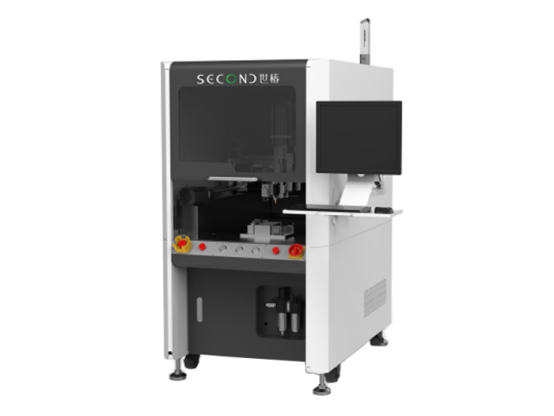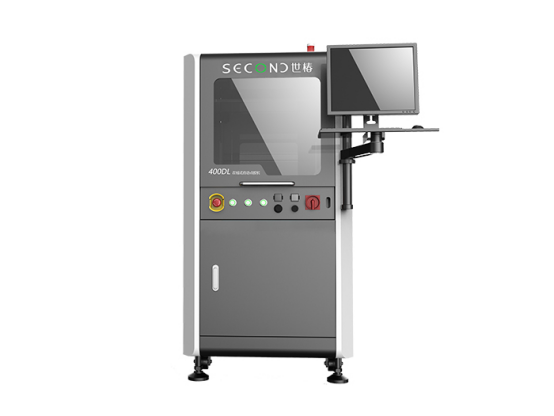Applications of dispensing machines in the AR-VR Equipment Overall industry
With the rapid development of Augmented Reality (AR) and Virtual Reality (VR) technologies, AR-VR devices have gradually moved from conceptual products to the mass consumer market. Whether it is the Meta Quest series, Apple Vision Pro, or Microsoft HoloLens,
these devices, while pursuing extreme lightweight and high performance, have also posed unprecedented challenges to the manufacturing process. Among them, the dispensing process, as a seemingly small but crucial technology, has become an invisible contributor to guaranteeing the reliability, optical performance and user experience of the devices.
This article will delve into the key role, technological breakthroughs and future trends of automatic glue dispensing machines in AR-VR device manufacturing.
1. Dispensing process requirements for AR-VR devices
a. The double pressure of miniaturisation and high precision
The internal structure of AR-VR devices is complex and highly integrated, containing core components such as optical modules, sensors, miniature circuit boards, and heat dissipation modules. The fixing, sealing and protection of these components rely on the dispensing process, but their specificity also brings unique technical challenges:
Miniaturisation and space constraints: In optical modules, for example, the assembly gaps of optical waveguides, lenses, and displays are usually less than 0.1 mm, and the glue needs to be precisely filled in micron-sized spaces to avoid overflowing or covering critical optical areas.27
Material suitability: Glue needs to meet multiple performance requirements, such as low shrinkage (preventing optical aberrations), high and low temperature resistance (adapting to the heat of equipment for long-term operation), and light transmittance (without affecting the optical path), etc. For example, UV-curable adhesives are the first choice for dispensing optical components due to their fast curing and low heat impact properties27.
Process stability: the repeatability of the dispensing process needs to be controlled within ±5 microns in a mass production environment, otherwise it may lead to batch quality problems27.
b. Diversified application scenarios of dispensing process
The manufacturing of AR-VR devices involves multiple dispensing processes, including but not limited to:
Optical module sealing: e.g., Apple Vision Pro’s Micro-OLED display is sealed at the joint with the lens to prevent dust intrusion and reduce light reflection, improving display contrast27.
Sensor protection: Meta Quest 3’s Inside-Out positioning sensor is surrounded by a waterproof and dust-proof adhesive to ensure the device’s stable operation in complex environments27.
Circuit board waterproof sealing: such as battery protection board encapsulation, PCBA three-proof paint coating, etc., to enhance the environmental resistance of the equipment 48.
Adhesive Servo motor screw Glue Dispensing Platform SEC-EC200P
Second Intelligent Precision Multi-functional Dispensing Platform SEC-EC200P adopts Six-axis mineral casting platforms for more powerful applications design, suitable for more powerful applications, with powerful functions, rich configurations, stable performance, wide range of applications, and strong scalability.
Dual X/Dual Y/Dual Z workstations (double-station four-station), two workstations alternately cycle to further improve operating efficiency, while also realizing front-end dispensing, back-end detection or curing, product deformation correction or real-time 3D path guidance functions.
2.technological innovation and breakthroughs in dispensing machines
a. High-precision dispensing equipment
The traditional dispensing process relies on manual operation, but the precision requirements of AR-VR equipment have driven the popularity of automation and intelligent technology. Modern dispensing machines usually use the following technologies to achieve high-precision control:
Piezo Jet Valve (Piezo Jet Valve) or Auger Valve (Auger Valve): to achieve nanoscale control of glue volume and trajectory through a closed-loop control system to avoid overflow or insufficient glue volume27.
Visual Positioning System: to use an industrial camera to capture the component position in real time, and combine with AI algorithms to correct the path deviation, to ensure the precision of the dispensing process27.
5-axis linkage technology: applicable to the complex three-dimensional Five-axis linkage technology: applicable to the gluing needs of complex three-dimensional structures, such as the encapsulated circuits inside the curved shell of the VR handle, and flexibly adjusting the angle of the nozzle to realise gluing in 360° with no dead angle35.
b. Innovations in Glue Materials
Glue manufacturers have developed a variety of customised solutions for the specific needs of AR-VR devices:
Optical Clear Rubber Adhesive (OCR): used for lens bonding, refractive index matching with glass, avoiding light path interference27.
Conductive Adhesive: used for connecting flexible circuits and sensors, replacing the traditional soldering process and improving productivity27.
Thermally Conductive Silicone: solves the problem of heat dissipation in a compact space and ensures the stability of the equipment for a long time of operation27.
c. Process simulation and data monitoring
simulates the dispensing process and optimises the parameter combinations through digital twin technology; at the same time, the Industrial Internet of Things (IIoT) collects real-time data such as pressure, temperature, and adhesive volume to provide early warning of process abnormalities and further improve production yields27.
3.the specific application cases of dispensing machine in AR-VR industry
a.VR lens dispensing
VR lens dispensing machine is a special equipment designed for VR glasses lens bonding process, with high-precision positioning, non-contact spraying, intelligent control and other characteristics. For example, the VR lens dispenser launched by Shenzhen Shi Chun Intelligent Equipment Co., Ltd,
adopts machine vision system and precision mechanical structure to achieve micron-level dispensing accuracy, which significantly improves production efficiency and product quality16.
b. 5-axis vision dispenser
5-axis vision dispensers are widely used in the manufacturing of AR-VR devices, especially for the gluing needs of complex 3D structures. For example, in the lightweight design of AR glasses, the 5-axis system can complete the micro-dispensing operation inside the ultra-thin bezel,
avoiding glue penetration into the surface of the lens, and safeguarding the product’s aesthetics and function35.
c. Whole line dispensing solution
The whole line dispensing solution provided by Second Intelligent for a domestic VR glasses manufacturer includes six-axis and four-link double-station dispenser, 3D path-guided dispenser and other equipments, which realizes the full automation process from loading, positioning to dispensing, and significantly improves the production efficiency and consistency of the products8 .
Automatic In-line PCB Glue Dispensing Machine SEC-DH400L
Second Intelligent In-line Glue Dispensing Machine SEC-DH400L adopts an integrated mineral casting design, with ultra-high precision and super stability, powerful expansion capabilities, and can realize ion cleaning, dispensing, detection, UV exposure and other functions;
Adopting a gantry structure, it can bear large loads, stable structure, and a powerful CCD visual positioning system, which can meet the requirements of Mark point positioning, edge positioning, and 3D scanning positioning; strong scalability, and can expand AOI detection 3D detection, UV exposure curing and other functions;
Strong platform compatibility, contact and non-contact dispensing, single-head and multi-head synchronous dispensing, automatic compensation and adjustment of double-head spacing, five-axis dispensing function based on needle A/R displacement, etc.
4.Future Trends: Intelligent and Green
a. AI-driven Adaptive Dispensing
Combined with machine learning algorithms, the dispenser can automatically adjust the flow and path of glue according to the deformation of the component and the ambient temperature and humidity, to realise ‘zero-defect’ production. For example, AI algorithms can analyse a large amount of production data to identify the best glue parameters, further improving efficiency and precision.
b. Eco-friendly material substitution
Bio-based glues and solvent-free glues will gradually replace traditional epoxy resins, reducing carbon emissions in the production process and driving the industry in the direction of greening27.
c. Micro-robot dispensing
For ultra-miniature devices such as foldable AR glasses, millimetre-sized dispensing robots may become the next-generation solution to meet the demand for higher-precision, smaller-space dispensing27.
5. CONCLUSION
In the pursuit of the ultimate experience of AR-VR devices, the dispensing process has moved from behind the scenes to the front stage. It is not only a process in the manufacturing chain, but also an interdisciplinary technology that integrates material science, precision machinery and artificial intelligence.
In the future, with the expansion of the meta-universe ecosystem, the advancement of dispensing technology will continue to provide key support for the reliability, lightweight and low-cost of AR-VR devices, and promote the further dissolution of the boundaries between the virtual and the real.
Second Intelligent has played an important role in theresearch, development, manufacturing, pre-sales and after-sales services of fluid dispensing robot, potting and coating solutions which range from various types of automatic fluid dispensing, potting, two-component potting machines and coating machines with desktop, free-standing, inline or cobot combined systems, and widely used in global electrical, electronics, home appliances, automobile, telecom, pharmaceutical, automotive electronics, semiconductor, aerospace, LED and more.



